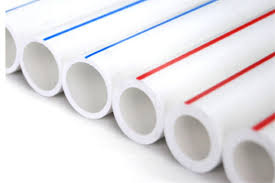Dec . 17, 2024 16:50 Back to list
Comparison of PVC and PPR Pipes in China for Plumbing Applications
PVC Pipes vs. PPR Pipes A Comparative Analysis
When it comes to plumbing and construction materials, PVC (Polyvinyl Chloride) and PPR (Polypropylene Random Copolymer) pipes are two of the most commonly used options. Each type of pipe has its own set of advantages and disadvantages, making them suitable for different applications. This article presents a comparative analysis of PVC and PPR pipes, focusing on their properties, applications, advantages, and disadvantages.
Properties
PVC pipes are made from a synthetic plastic polymer, which is known for its rigidity and strength. They are commonly used for drainage, waste, and vent systems. PVC is resistant to corrosion and chemicals, making it a durable choice for long-term use. However, PVC has limitations when it comes to high temperatures.
PPR pipes, on the other hand, are made from a type of polypropylene that provides greater flexibility and resistance to high temperatures. PPR is known for its high impact strength and resistance to chemical damage. It can withstand temperatures of up to 95 degrees Celsius (203 degrees Fahrenheit), making it suitable for hot water applications.
Applications
PVC pipes are primarily used in plumbing, irrigation systems, and for construction purposes. They are ideal for drainage systems, as they do not corrode and can handle a variety of chemicals. Given their affordability and ease of installation, PVC pipes are also commonly used in residential projects.
PPR pipes are increasingly being used in both residential and commercial plumbing. They are preferred for hot and cold water supply systems and are commonly used in heating systems as well. Their ability to withstand high temperatures makes them particularly useful in industrial applications where hot water is prevalent.
china pvc pipe vs ppr pipe

Advantages
One of the main advantages of PVC pipes is their cost-effectiveness. They are typically less expensive than PPR pipes, making them a popular choice for budget-conscious projects. PVC pipes are also easy to handle and install, which can reduce labor costs.
PPR pipes offer several benefits, including excellent thermal insulation properties. This insulation reduces heat loss when transporting hot water, making them more energy-efficient in the long run. Additionally, PPR pipes are less likely to develop leaks, which can be advantageous in preventing water damage.
Disadvantages
Despite their advantages, PVC pipes have some drawbacks. They can become brittle over time, especially when exposed to UV rays, which makes them less suitable for outdoor applications without proper protection. PVC is also not recommended for high-temperature applications, as it can warp or lose structural integrity under heat.
PPR pipes, while more expensive than PVC, may require specialized tools for cutting and welding, increasing installation complexity and cost. In some regions, PPR's market penetration is still growing, which means sourcing materials may take longer than obtaining PVC.
Conclusion
In conclusion, both PVC and PPR pipes have their unique strengths and weaknesses. The choice between the two depends largely on the specific requirements of the project. For budget-sensitive and general-purpose applications, PVC pipes are a reliable option. Conversely, for applications requiring higher temperature resistance and energy efficiency, PPR pipes may be the better choice. Ultimately, understanding the properties and applications of each type of pipe can help in making an informed decision tailored to individual needs.
-
High-Quality PVC Borehole Pipes Durable & Versatile Pipe Solutions
NewsJul.08,2025
-
High-Quality PVC Perforated Pipes for Efficient Drainage Leading Manufacturers & Factories
NewsJul.08,2025
-
High-Quality PVC Borehole Pipes Durable Pipe Solutions by Leading Manufacturer
NewsJul.08,2025
-
High-Quality PVC Borehole Pipes Reliable PVC Pipe Manufacturer Solutions
NewsJul.07,2025
-
High-Quality UPVC Drain Pipes Durable HDPE & Drain Pipe Solutions
NewsJul.07,2025
-
High-Quality Conduit Pipes & HDPE Conduit Fittings Manufacturer Reliable Factory Supply
NewsJul.06,2025

